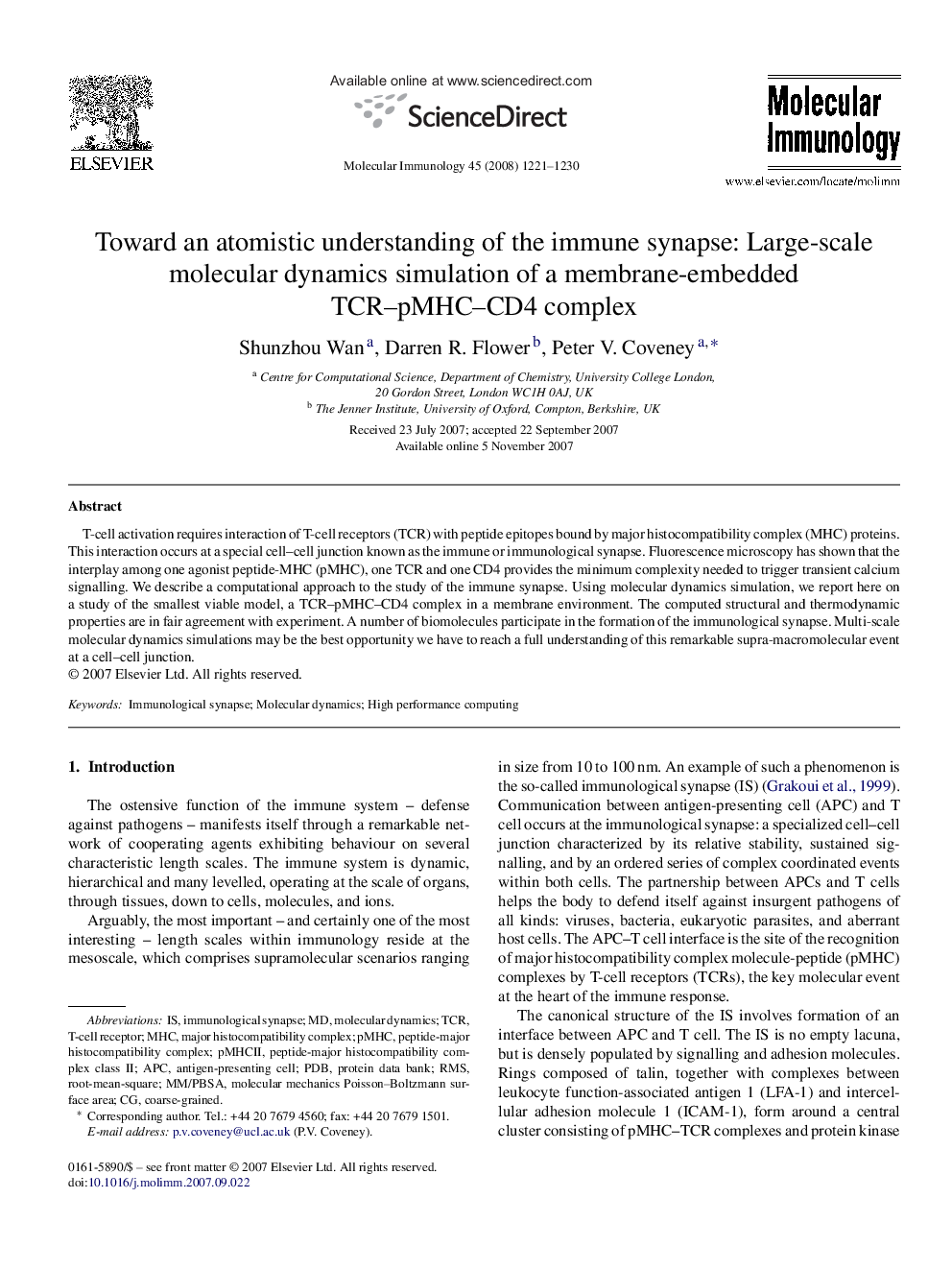| Article ID | Journal | Published Year | Pages | File Type |
|---|---|---|---|---|
| 2832806 | Molecular Immunology | 2008 | 10 Pages |
T-cell activation requires interaction of T-cell receptors (TCR) with peptide epitopes bound by major histocompatibility complex (MHC) proteins. This interaction occurs at a special cell–cell junction known as the immune or immunological synapse. Fluorescence microscopy has shown that the interplay among one agonist peptide-MHC (pMHC), one TCR and one CD4 provides the minimum complexity needed to trigger transient calcium signalling. We describe a computational approach to the study of the immune synapse. Using molecular dynamics simulation, we report here on a study of the smallest viable model, a TCR–pMHC–CD4 complex in a membrane environment. The computed structural and thermodynamic properties are in fair agreement with experiment. A number of biomolecules participate in the formation of the immunological synapse. Multi-scale molecular dynamics simulations may be the best opportunity we have to reach a full understanding of this remarkable supra-macromolecular event at a cell–cell junction.
